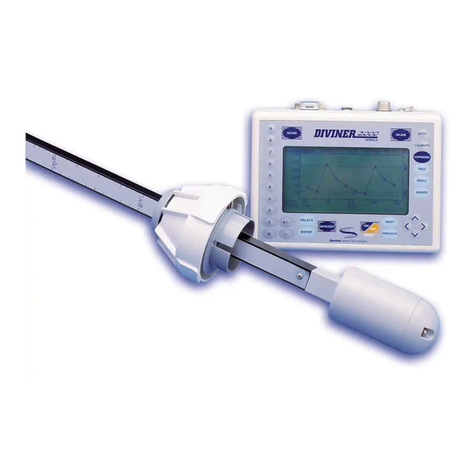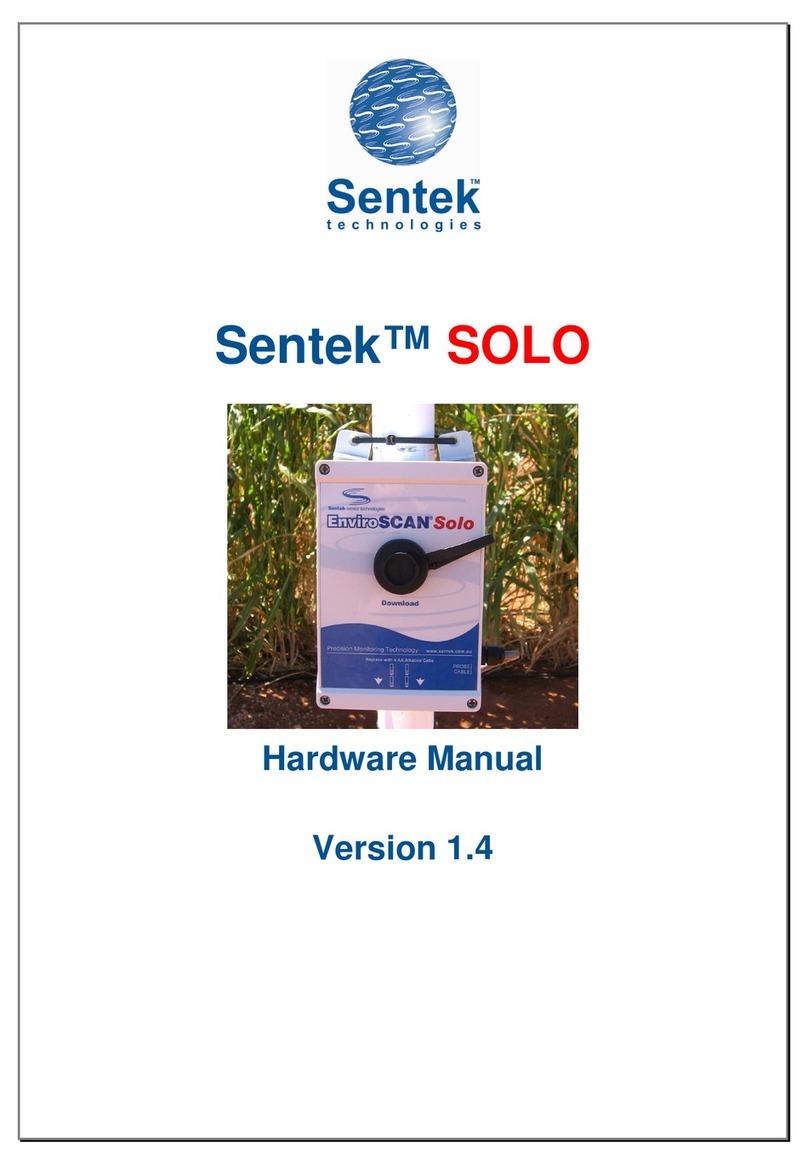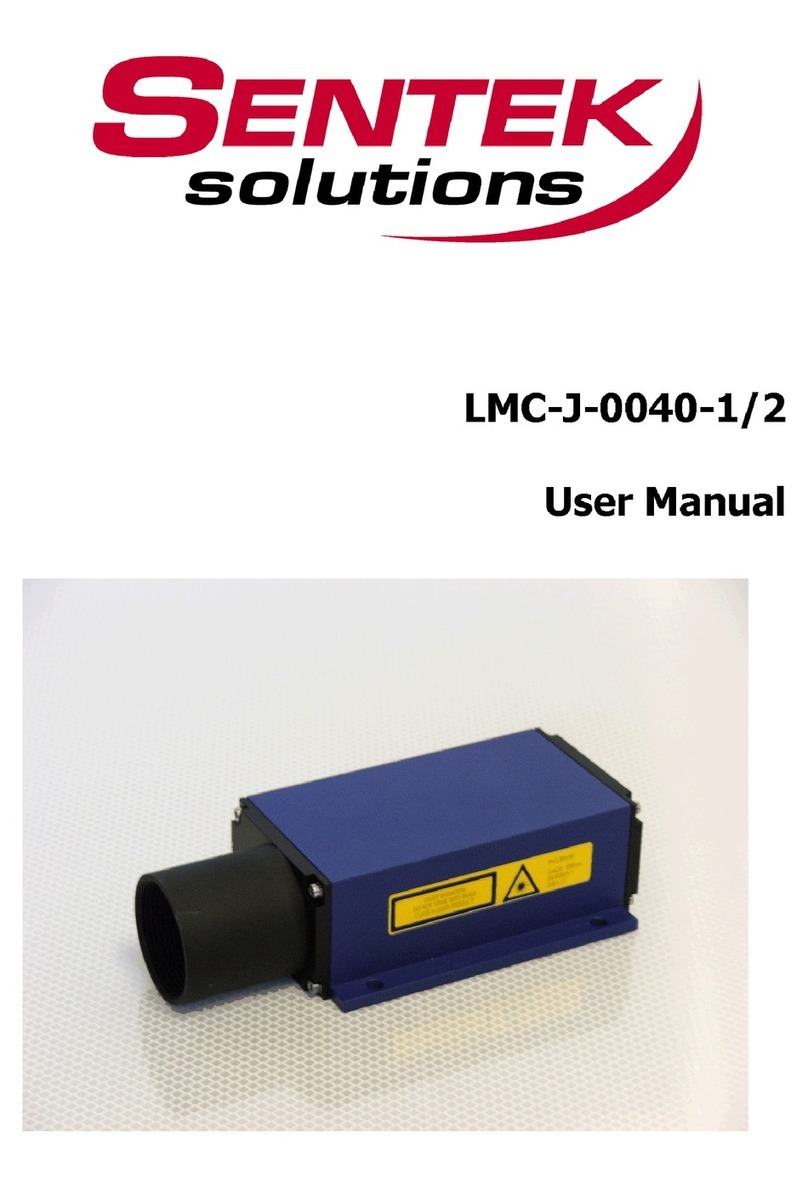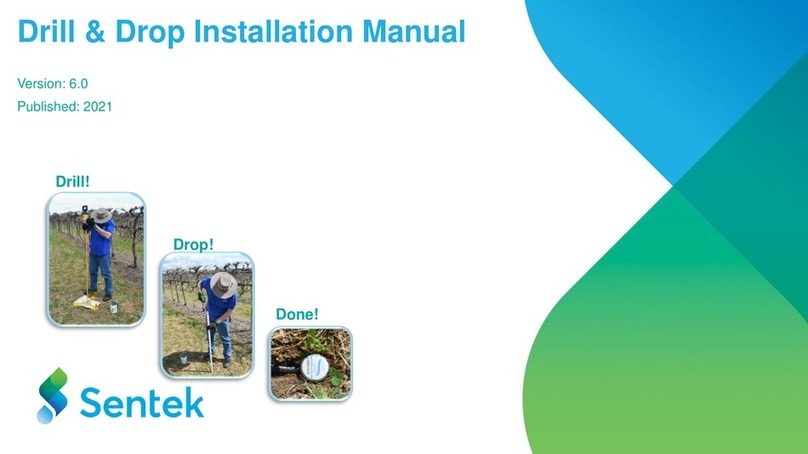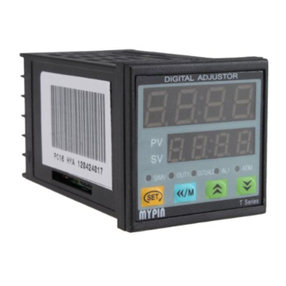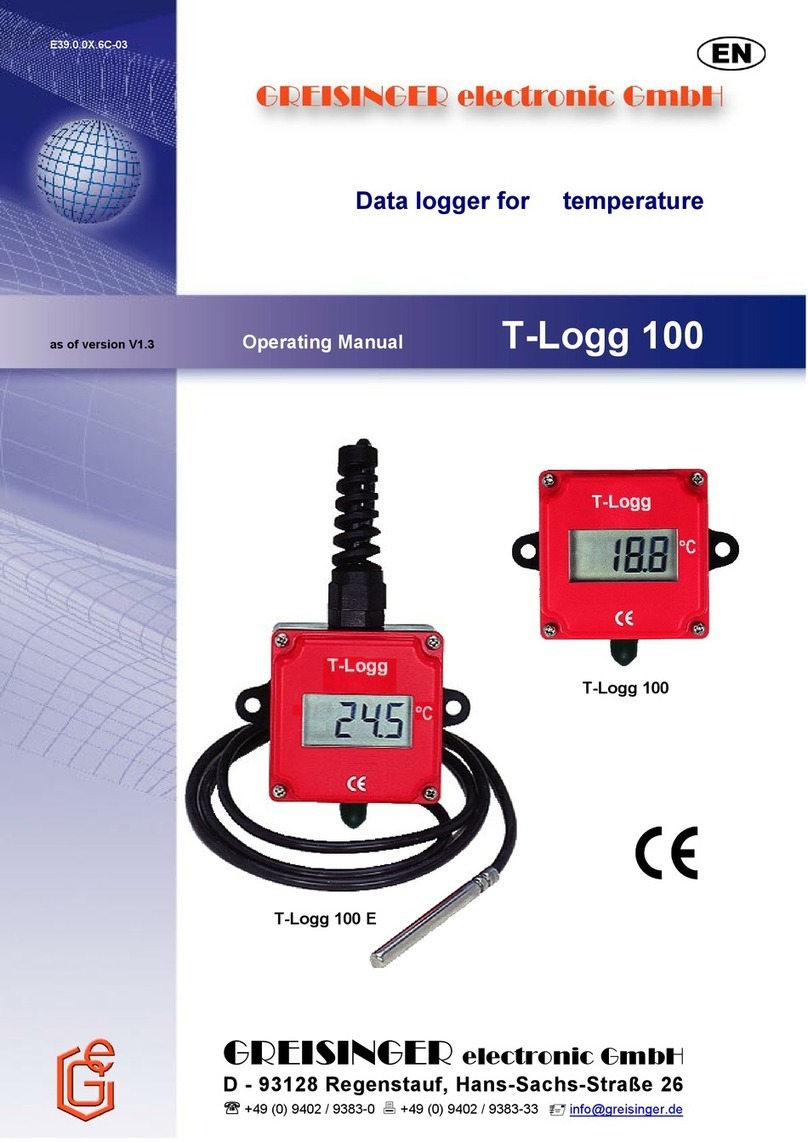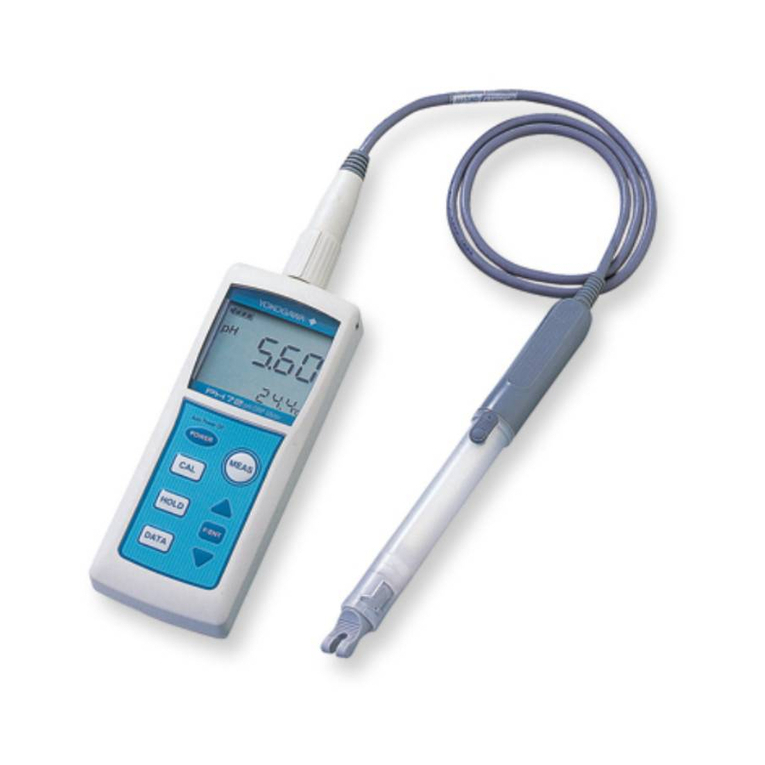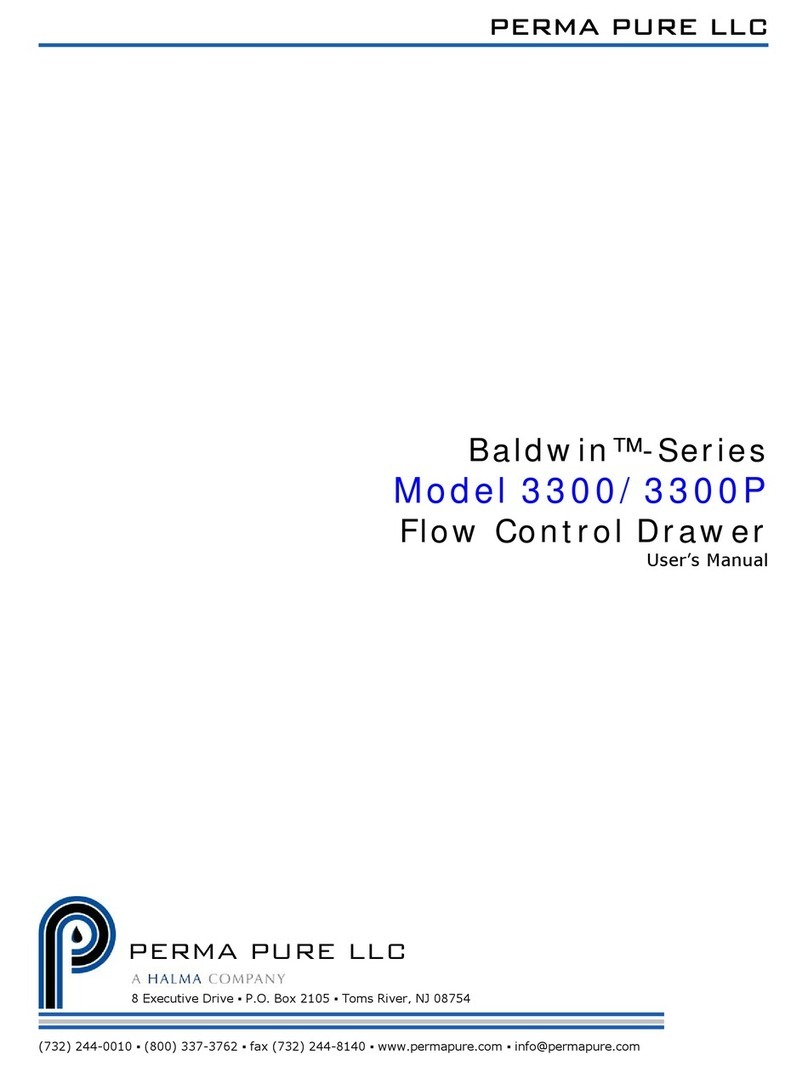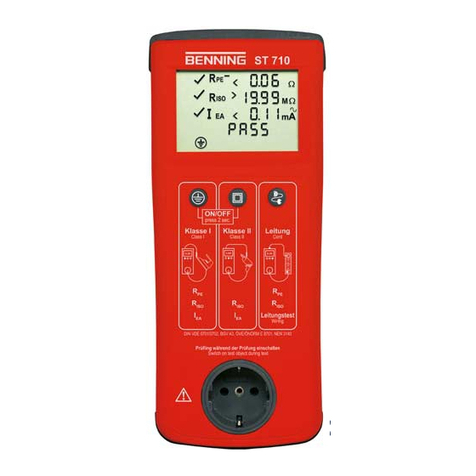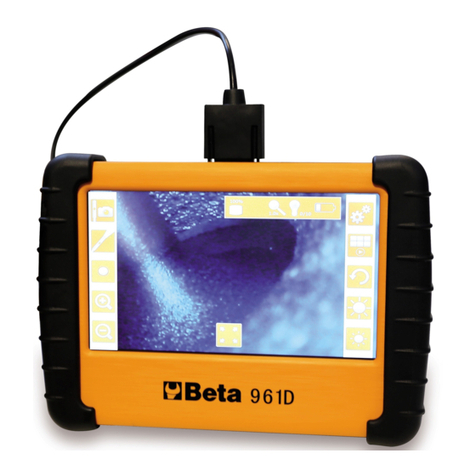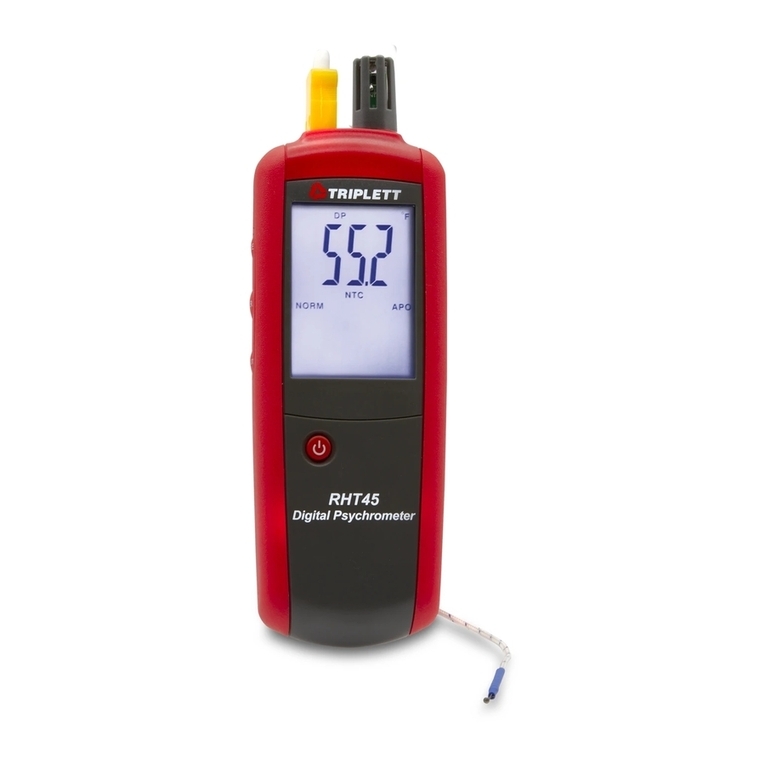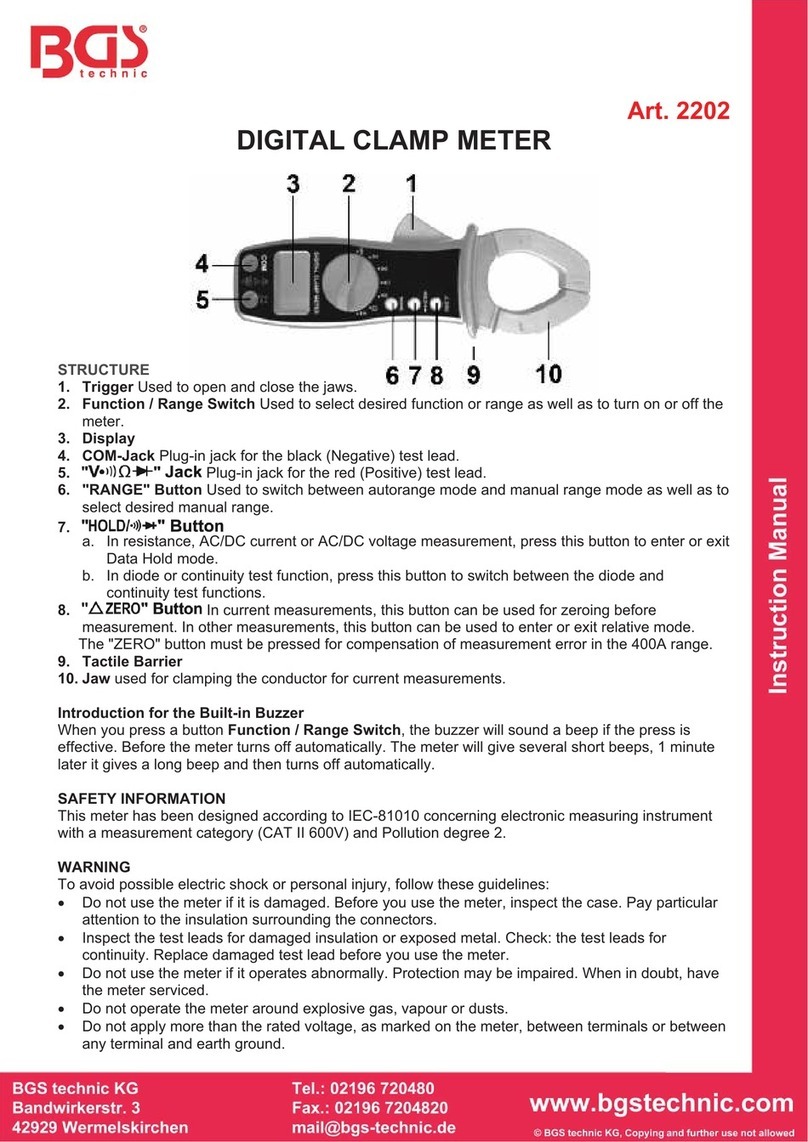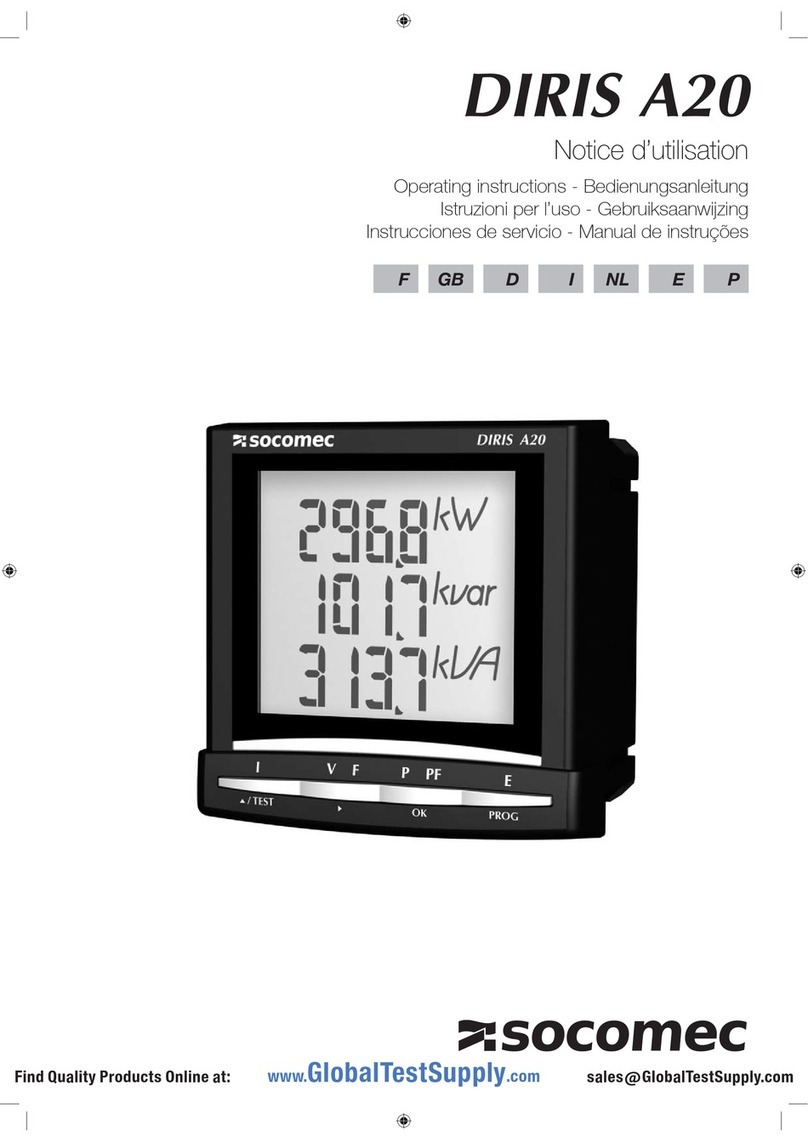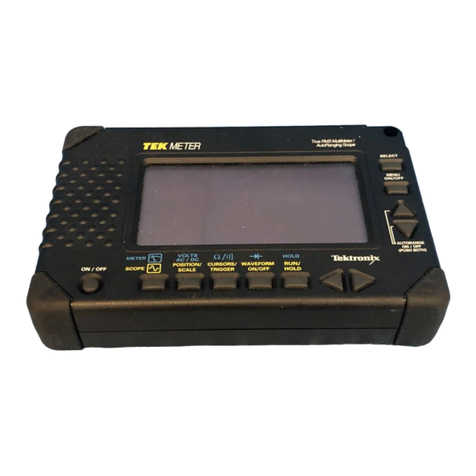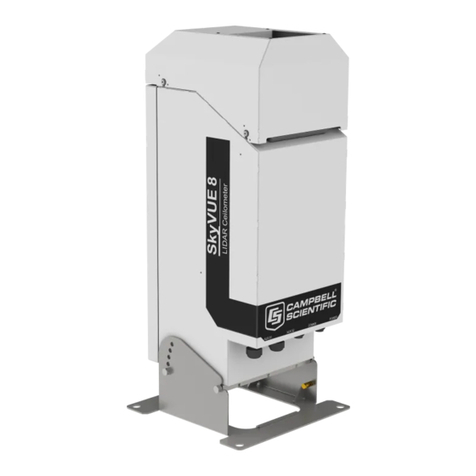Sentek RT6 User manual

Sentek RT6
HARDWARE MANUAL
Version 3.2
February 2011


The information in this document is subject to change without notice.
Information provided in this document is proprietary to SENTEK Pty Ltd.
This document or any part of it, may not be copied, reproduced
or translated in any way or form.
COPYRIGHT © 1997-2010
SENTEK Pty Ltd
EnviroSCAN and EasyAG are trademarks of SENTEK Pty Ltd.
Sentek RT6Rev03 (2011-01-31)


TABLE OF CONTENTS
Page 1
Table of Contents
Chapter 1: Introduction........................................... 5
ABOUT THIS MANUAL .............................................................................................5
GLOSSARY OF TERMS..............................................................................................5
ELECTRO-MAGNETIC COMPLIANCE.........................................................................8
Chapter 2: General Description.............................. 9
SYSTEM OVERVIEW.................................................................................................9
SYSTEM DESCRIPTION............................................................................................10
Logging Facility ...............................................................................................10
EnviroSCAN Probes.........................................................................................12
EasyAG Probes.................................................................................................13
Access Tube......................................................................................................14
EnviroSCAN Top Cap ......................................................................................15
EnviroSCAN Sensors........................................................................................16
Cabling.............................................................................................................17
Software............................................................................................................18
Chapter 3: Technical Description......................... 19
GENERAL SYSTEM OPERATION..............................................................................19
DETAILED TECHNICAL DESCRIPTION......................................................................19
Logging facility ................................................................................................19
Probe................................................................................................................21
Sensor...............................................................................................................21
Power Supply....................................................................................................23
DATA DOWNLOADING OPTIONS .............................................................................25
Chapter 4: System Installation.............................. 27
POSITIONING..........................................................................................................27
Mounting poles.................................................................................................27
Logging Facility ...............................................................................................27
Solar Panel.......................................................................................................27
Access Tubes.....................................................................................................28
Top Caps ..........................................................................................................28
CABLING ...............................................................................................................28
External Power.................................................................................................28
Internal Battery Cabling ..................................................................................29
EnviroSCAN Probe Cabling –at probe ...........................................................30
Probe Cabling –at logging facility..................................................................31

SENTEK
Page 2
External RS232 cabling ...................................................................................32
RS485 cabling..................................................................................................33
ASSEMBLY............................................................................................................35
EnviroSCAN Probes.........................................................................................35
EasyAG 5-wire Probes.....................................................................................36
Logging Facility...............................................................................................37
Chapter 5: Operating Instructions........................39
INITIAL LOGGER CONFIGURATION AND NORMALIZATION .......................................39
DAY-TO-DAY OPERATION.....................................................................................39
FRONT PANEL DOWNLOAD ...................................................................................40
REMOVING THE LOGGER FOR DOWNLOADING........................................................40
Chapter 6: Maintenance ........................................43
SYSTEM ................................................................................................................43
SOLAR PANEL .......................................................................................................43
CABLING...............................................................................................................44
SLA BATTERY.......................................................................................................44
REMOVABLE LOGGERS NI-CAD BATTERY .............................................................45
Chapter 7: Moving & Storing.................................47
SYSTEM REMOVAL ...............................................................................................47
TRANSPORTATION.................................................................................................49
STORAGE ..............................................................................................................49
Chapter 8: Trouble Shooting.................................51
FUSES ...................................................................................................................51
FAULTS.................................................................................................................51
Fault Determination.........................................................................................52
Cable Faults.....................................................................................................54
REPLACEMENT PROCEDURES................................................................................54
APPENDIX A...........................................................59
SYSTEM OVERVIEW ..............................................................................................59
APPENDIX B...........................................................61
SYSTEM CONFIGURATION EXAMPLES ....................................................................61
APPENDIX C...........................................................63
PROBE CONFIGURATION EXAMPLES.......................................................................63

TABLE OF CONTENTS
Page 3
APPENDIX D........................................................... 65
FRONT PANEL VISUAL............................................................................................65
APPENDIX E........................................................... 67
OVERLAY DIAGRAM ..............................................................................................67
RT6 Main Board Overlay.................................................................................67
APPENDIX F........................................................... 69
CABLE WIRING ORDER..........................................................................................69
APPENDIX G........................................................... 71
ENVIROSCAN SENSOR ADDRESSING ....................................................................71
EASYAG SENSOR ADDRESSING.............................................................................72
APPENDIX H........................................................... 73
EXTERNAL RS232 TO COMPUTER CABLE DIAGRAM...............................................73
APPENDIX I ............................................................ 75
RS485 CONNECTIONS............................................................................................75
RS485 Circuit Diagram....................................................................................75
RS485 Physical Connections............................................................................75
APPENDIX J ........................................................... 77
FORMULA TO CALCULATE LOGGER STORAGE CAPACITY ......................................77
APPENDIX K........................................................... 79
SPECIFICATION SHEETS .........................................................................................79
EnviroSCAN soil moisture sensors...................................................................79
EnviroSCAN 5-Wire Technical Specifications .................................................80
EasyAG 5-Wire Technical Specifications.........................................................81
RT6 logger........................................................................................................82
RT6 Main Board...............................................................................................83
Power supply....................................................................................................84
APPENDIX L........................................................... 85
SUPERSEDED SYSTEMS..........................................................................................85
Comparison of RT5 and RT6 Main Boards......................................................85
Removable Logger firmware revision ..............................................................86
Comparison of 4-wire and 5-wire board..........................................................86

SENTEK
Page 4

CHAPTER 1: INTRODUCTION
Page 5
Chapter 1: Introduction
About this Manual
This manual describes the Sentek RT6 soil water
monitoring system and includes technical
information, installation and maintenance procedures.
It is intended to be used as a guide to the assembly
and maintenance of the Sentek RT6 System.
This manual should be read in conjunction with:
Access Tube Installation Manual
EasyAG Installation Manual
IrriMAX Manual (or online help)
Data Exchange Manual (or online help)
RT6 Logger Manager (or online help)
Remote Connection Manger - RCM (or online
help)
Study of this manual does not allow users who have
not undertaken the appropriate Sentek training course
to install, maintain and repair the Sentek RT6 System
under the warranty conditions.
Superseded
Equipment
For details of the superseded RT5 systems and the
related 4-wire boards, sensors and installation
methods please refer to:
EnviroSCAN Hardware Manual, Version 3.0,
November 1997
See Appendix L for an overview of RT5/RT6
similarities and differences.
Glossary of Terms
Caution:
Warning:
A caution defines a procedure which, if not strictly
observed, could result in damage to, or destruction of,
equipment.
A warning defines a procedure which, if not strictly
observed, could result in personal injury or loss of
life.

SENTEK
Page 6
Communication
RS232
Describes the process of transferring commands or
data between the logger and the computer.
Is the standard which describes the specification for
single ended serial transmission of data, which is the
standard for the COM 1 and COM 2 ports on a
computer.
RS422/RS485
Radio Modem
PCB
VHF
UHF
AC
DC
EMC
EMI
SLA Battery
Is the standard which describes the specification for
serial transmission of data, which is the standard for
long distance communications. This is a differential
signal and is specified to be used with cable runs up
to 1km depending on baud rate and type of data cable
used.
Is the circuitry that converts the signals from the
logging facility into a form that can be transmitted
and received by radios.
Is an abbreviation for "Printed Circuit Board"
Is a frequency band used by radio and is an
abbreviation for "Very High Frequency"
Is a frequency band used by radio and is an
abbreviation for "Ultra High Frequency"
This an abbreviation for "Alternating Current" and
describes the type of current and voltage which is
commonly used to power solenoids (e.g. 24 volts AC)
This is an abbreviation for "Direct Current" and
describes the type of current and voltage which is
derived from batteries (e.g. 12 volts DC)
Abbreviation for Electro-Magnetic Compliance
Abbreviation for Electro-Magnetic Interference
Abbreviation for Sealed lead Acid. This describes the
construction of the type of battery used to power the
logger.

CHAPTER 1: INTRODUCTION
Page 7
I/O
Abbreviation for “Input” (I) and “Output”(O) usually
in reference to signals into and out of a device
ID
IEC 60529
Abbreviation for “Identification”
Standard IEC 60529 Degrees of protection provided
by enclosures (IP code).
The Access tube top cap is rated to IP55:
IP5x = complete protection from contact.
Dust allowed but does not affect function.
IPx5 = (water) jets from a nozzle in all directions.

SENTEK
Page 8
Electro-Magnetic Compliance
EMC approvals
Marking
Caution:
The Sentek RT6 System has been tested and found to
comply with the following EMC guidelines:
EN55011/CISPR11 (AS/NZS2064) Group 1 Class B
EN50082-1 : 1992 (IEC 801-2,3,4)
FCC Part 15 Class B
FCC Part 2 Class B
The above EMC approvals allow the product to be
CE and C-tick marked.
Any modifications to any part of the system or to
any peripherals may void the EMI compliance of
the system or peripherals.
Caution:
The sensors/probes are not to be operated in free air
as they may cause interference to radio
communication devices.
Caution:
Caution:
External power supplies connected to the logging
facility must comply with safety and EMC
requirements of the country in which the system is
to be used.
Ferrite beads must be fitted to both ends of the
probe cabling in order to comply with EMC and
FCC requirements.

CHAPTER 2: GENERAL DESCRIPTION
Page 9
Chapter 2: General Description
System Overview
System
components
Maximum
configuration
The Sentek RT6 System has been designed to log
readings from multiple EnviroSCAN soil moisture
probes/sensors at pre-selected time intervals (as short
as 1 minute) for downloading into a computer. The
software provides graphical data manipulation for
analysis by trained growers, scientists or agronomists.
The Sentek RT6 System consists of :
logging facility
EnviroSCAN probes or EasyAG probes
access tube/top cap
soil moisture sensors
cabling
IrriMAX software
Appendix A illustrates the components that make up a
typical Sentek RT6 System and how it appears in the
field.
The central logging facility is connected by cable to
probes at each monitoring site. Probes can be located
within cable runs of up to 500 meters from the logger.
The logging facility supports 2 cable runs with each
run supporting up to 16 sensors. See Appendix B for
examples of configurations. The 16 sensors on each
run can be connected on 1 probe or spread across up
to 8 probes depending on application. With standard
components the array of sensors can extend to a soil
depth of 2.0 meters. Probes are available in standard
lengths of 0.5m, 1m, 1.5m, 2m. The system has the
capability of monitoring greater depths if required
upon special request. See Appendix C for examples
of probe configurations.
Downloading
Downloading of data can occur either in the field via
a downloading cable to a notebook computer or in the
office by removing the logger and transferring the
data to a desktop computer. Additionally external

SENTEK
Page 10
telemetry devices can be connected to the RT6 Main
Board to provide remote communication or the
system can be hard-wired to a computer utilizing
RS485 communication.
System description
Logging Facility
Housing
.
The logging facility consists of :
water resistant housing
front panel
RT6 Main Board
removable logger
battery
The UV-resistant housing is fixed to an aluminium
mounting pole. The solar panel (if used) will also
mount onto this pole.
The housing is designed to be water resistant and
manufactured from a compound which is resistant to
chemicals typically used in agricultural applications.
The housing has a latched front lid that opens to gain
access to the communication port for data
downloading, removing logger for downloading back
at office, running diagnostics or for servicing

CHAPTER 2: GENERAL DESCRIPTION
Page 11
Front Panel
Main Board
(replacing fuses, etc).
The front panel is fixed to the Main Board and
provides :
front panel accessible fuses
RS232 local communication port
local/remote switch
See Appendix D for visual of the RT6 front panel.
The Main Board provides the I/O connections to the
removable logger, battery, probes, solar panel and
external communications. The Main Board also
performs the following functions :
solar charger for SLA battery
10.5/11.5volt battery cut-off (ensures the SLA
battery does not over-discharge)
RS485 communication drivers
RS232 communication drivers
power drivers for Run-A and Run-B
encoders, drivers and buffers for Run-A and
Run-B
receiver decoders for Run-A and Run-B
lightning/surge protection
Removable logger
The removable logger contains the intelligence of the
logging facility for control of I/O signals and
recording of measurements.
The removable logger performs the following
functions :
controls individual addressing of sensors to be
powered and measured
measures signal from sensors at preset sampling
intervals
stores measurements from sensors into battery
backed memory
controls separate powering of probe runs when
sampling
stores logger configuration in non-volatile
memory
battery backed time/day clock

SENTEK
Page 12
provides serial data communication with
computer or external telemetry devices
measures system voltages during diagnostics
Battery
The SLA battery provides power to the logging
facility during night periods (if solar powered) or in
the event of external power failure.
EnviroSCAN Probes
The probe consists of :
a plastic extrusion
datum setting handle
5-wire interface board
20 way ribbon cable running along its length with
connectors for sensors every 100mm
Up to 16 sensors may be connected at desired depths
on any one probe for example sensors placed at 10,
20, 30, 50, 70, 90 and 120 cm. The sensors snap on to
the probe with slots provided every 10 centimeters
allowing the user to specify the sensor depths during
installation or subsequently re-positioning sensors if
required. See Appendix C for examples.
Standard length probes of 0.5 meters are used for
shallow rooted crops or turf while 1, 1.5 or 2 metre
probes are used for tree crops, vines and broadacre
crops such as cotton. In research, waste water
management, environmental and mining applications
probes of longer lengths such as 5, 10 or 15 meters

CHAPTER 2: GENERAL DESCRIPTION
Page 13
are used.
Up to 8 probes may be connected to each run to
support multiple probes on a site or multiple sites.
See Appendix B for examples of configurations.
The maximum distance of any probe from the logging
facility is a 500 metre cable length.
Cable joins should be no further than 0.5 meters from
the probe. When a probe is needed more than 0.5m
away from the main cable run, it should be looped in
and cut close to the probe site to allow for joining.
This will increase the length of the cable run, but
ensure reliable operation of the system (so long as it
stays under 500m).
Failure to follow these cabling guidelines can result in
erratic readings.
EasyAG Probes
An EasyAG probe is a cost reduced fixed
configuration (30cm or 50cm) instead of the fully
configurable EnviroSCAN probe. The EasyAG probe
consists of :
An EasyAG top cap and integrated access tube
5-wire EasyAG interface board connected to an
integrated sensor board with three or five sensors
at 10cm intervals
EasyAG sensors have a smaller diameter than
EnviroSCAN sensors
EasyAG probes can be intermixed with EnviroSCAN
probes.
They must conform to the same cabling restrictions
that apply to EnviroSCAN Probes.

SENTEK
Page 14
Access Tube
The EnviroSCAN access tube (56.5 mm diameter)
and the EasyAG access tube (32 mm diameter) have
been manufactured to very high standards with a fine
tolerance inside diameter so as to provide minimal
internal air gap for the sensor.
Tube installation tools and cutting edges have been
specially designed to install the access tubes into
various soil types without air gaps. See the Access
Tube Installation Manual or EasyAG Installation
Manual for details.

CHAPTER 2: GENERAL DESCRIPTION
Page 15
EnviroSCAN Top Cap
.
The Top Cap assembly has been designed to prevent
water and dust entry to IP55 IEC 60529 standard (see
glossary). The assembly is made up of a body which
has a removable cap with "O" ring that is screwed
onto the body. The Top Cap body is glued to the top
of the access tube. Removing the screw cap enables
easy insertion and removal of the probe for repair or
re-configuration without disturbing the soil profile
surrounding the site.
The Top Cap has locaters for the probe which
minimizes translocation effects resulting from
rotating the probe in the tube following removal and
re-insertion.
A cable gland located at the bottom of the body
provides a watertight entry of the cable from the
logging facility.
The Top Cap also has a stop for the probe so that the
sensors are positioned vertically in the correct
position in relation to the soil depth being monitored.
The body automatically positions the probe so that it
locates the first sensor at 10cm depth. Location of the
first sensor at 50mm is achieved by fixing the body of
the top cap assembly onto the access tube at 50mm
from the soil surface.

SENTEK
Page 16
After installation of the access tube, bottom stopper
and top cap (see the Access Tube Installation
Manual), the probe is lowered into this tube.
Readings of soil water content are taken through the
PVC access tube without any contact between the
sensor and the soil. The bottom of the access tube is
sealed with a watertight bottom stopper to protect the
probe from entry of water.
EnviroSCAN Sensors
The sensor consists of a tubular housing with two
brass rings. The electronic circuit contained within
this housing plugs into a ribbon cable running along
the extruded support rod which supports the
sensors. This support rod can be fitted with
multiple sensors (up to 16), located at 100mm
intervals along its length.
The sensors slide onto the extrusion at the desired
depth. The sensors may be replaced in the field. No
gluing or soldering is necessary. A link is provided
on each sensor to enable it to be easily addressed
and re-addressed.
The sensors can be mounted on the support rod at
depth intervals to suit a variety of crops and soil
variability (see Appendix C). Each configuration of
multiple sensors on the support rod is called a
"probe".
The sensors/probe are lowered into a 50mm plastic
access tube which is vertically installed in the soil
and sealed at the top (with a screwed top cap) and
bottom (with an expandable bung).
Table of contents
Other Sentek Measuring Instrument manuals
